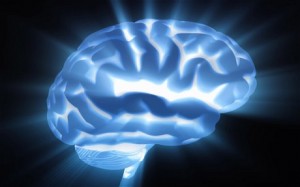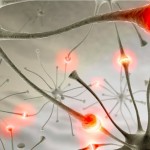Cerebrology, the door to a fresh new loving way of healing has opened…
What has been used in the past, to help people grow and what were the origins?
Let us look at where we have been..
Freud believed the unconscious was a place we “repressed” the naughty sexual feelings and memories we had.
Milton Erickson’s ideas about an “unconscious” were different than Freud’s beliefs. Both of their ideas about our “unconscious and subconscious mind” are a complicated explanation of a theoretical system that is a philosophy.
The philosophy of the mind unfortunately has no place in neuroscience. What actually occurs in our brain is very different.
Erickson watched what he described as “cults that used trance” to develop the techniques of hypnosis and trance he used. He realized that confusion broke down critical judgement and was a key to making a person more suggestible to additional conditioning. Milton Erickson stated, “In all my techniques, almost all, there is confusion.” Even that sentence is confusing.
Richard Bandler and John Grinder who created Neuro Linguistic Programming, used Milton Erickson’s help. N.L.P. can for a short time, give us a good feeling, it can also be used to remove our critical judgement and make us very suggestible.
In our past, we have seen healer-patient relationships that gave great power to the healer. One reason for the disparity in power was that the language used made it difficult for someone that wanted to enhance their life to be able to understand what was happening.
If we do not understand what the self-help we are getting does, is it self-help or are we still giving over our power?
Many people spend years in a process of growth and are told that it “takes many years” or that they needed to devote their entire lives to the process to make it work.
Cerebrology is like learning to float, once you have it, its yours forever so you can move on.
Cerebrology is a scientific way to understand how we can enhance our brain yet it is simple to understand and is a natural process.
Cerebrology is new, scientific and does something in our brain to help us grow
We have the ability to improve the bad reactions we have.
Recently there have been experiments on animals and humans to rewrite memory. The method is described as “re consolidation of memory”.
The memory that was re consolidated or rewritten was not a verbal memory. The work was done on the amygdala, the section of our brain associated with emotional learning. Our amygdala is part of our automatic brain, what I call our operating system.
In recent years, additional studies have replicated Nader’s studies in other mammals, and they have even extended the idea to humans. In 2009, neuropsychologists confirmed that if you activate a person’s fear, the traumatic memories associated with it can, for a brief period, be altered. The key is to provide complete safety during the reconsolidation window-which, in humans opens up minutes after a memory is recalled. The window lasts up to six hours, but then slams shut until the next time the memory is recalled.
When we put a memory into play, it is destabilized, flexible and vulnerable or ready to be permanently rewritten, adding the new information we add to it. This technique is what you are about to learn.
How can the new science of Cerebrology be an effective tool in self-help to improve what happens in our brain?
I want self-help to be user friendly, easily understood and it should have a basis in neuroscience that can be explained simply as well. I believe this type of self help will empower people and allow them the tools they need to grow and be more themselves.
We need to understand where our reactions and perceptions come from so we can understand why this works so effectively on our brain.
How we react can come from conditioning but most of the time our reactions come from affect. Affect is something we learned before we were verbal, when we empathized with our parents, emulated the relationship they had with others and modeled the feelings our parents had about themselves.
Just as we watch someone dance and feel the feeling in our body, later this feeling is what gives us the ability to do the same dance. This is the way we learned affect before we were verbal.
Learning affect takes place the same way in animals and is what makes the difference between a feral cat and one that is comfortable sitting in our lap. The part of our brain that makes one person react differently than another or have a different self image than another, does not understand verbal language any more than a cat does.
Now we need to understand how Cerebrology, will improve the reactions in our brain.
I am proud to say Cerebrology exercises give people what they need to open their curtains and drapes, so they can see by their own light.
We find the exact automatic preparation that inhibits us from having an experience of ourselves that has clarity. When we connect to the automatic preparation that gives us the altered perception or reaction, we let go of the preparation or rewrite it.
It is simple, we put the information we want, in the file it belongs in. This technique is similar in some ways to just feeling good but the little extra is worth it.
Harvard psychiatrist Dr. Roger Pitman likened reconsolidation to a file in an office cabinet; if you want to adjust the contents, first you have to retrieve the file. But you can only make changes when it is opened.
Improving how we automatically prepare or react is important, the future will tell us just how important it is.









